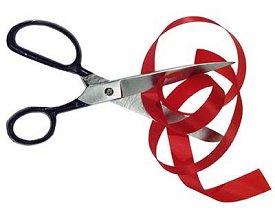While the media-driven scandals du jour roll on, President Trump quietly goes about reshaping the U.S. economy. Case in point: Last week, Trump directed the EPA to cut even more red tape for manufacturers. And he’s not done yet.
The idea is not to get rid of air quality standards, but to make sure that the science behind them is transparent and reliable — and not just part of someone’s political agenda, as has often been the case in the past.
The White House says that U.S. National Ambient Air Quality Standards constitute “outdated and unnecessary barriers to growth.” Under the new standards, EPA will process state-submitted plans within 18 months, for instance, giving regulated industries a clearer idea of what they can and can’t do, quickly. And the permitting process for individual projects will eventually be limited to a year.
We’ve heard for years now that “nothing can be done” for manufacturing, it’s a lost cause. While it’s true automation is an ongoing part of manufacturing, that doesn’t mean more jobs can’t be created. Quite the contrary.
Uniquely among recent presidents, Trump actually has experience running businesses that build and make things.
In signing the presidential order to the EPA, Trump described what many factory owners would call the hard facts of life, especially under a hard-core regulatory regime such as President Obama’s: “People were stuck. They’d have a factory. It would be under review for 10 years, 12 years, and then get rejected.”
Trump, more than any president since Ronald Reagan, understands that excessive regulation is poison for economic growth. Comparing deregulation to tax cuts, Trump said on Thursday that “the cutting of regulations could have had the same or even a bigger impact on our economy.” That’s no exaggeration. In Obama’s last year, the number of factory jobs shrank by 16,000. Since Trump entered office and began cutting taxes and slashing regulations, 281,000 new manufacturing jobs have been created.
Already, Trump’s deregulation binge has borne fruit. The National Association of Manufacturers quarterly survey found that the small manufacturers’ optimism index reached 94.5% in March, its highest level since the survey began 20 years ago. And the index for sales growth rose to its second-highest reading ever.
The point is, regulations are needed in our economy, but bad regulations aren’t. All told, in 2012, regulation cost small manufacturers just over $2 trillion, according to a study by NAM last year. That’s $9,991 per employee every year just to comply with the rules government imposes. For all manufacturers, the cost is even higher: $19,564 per worker per year.
Quietly, President Trump’s tax cuts and deregulation of American industry has given the U.S. economy a shot in the arm. And they’ve put U.S. manufacturers back on their feet again.
